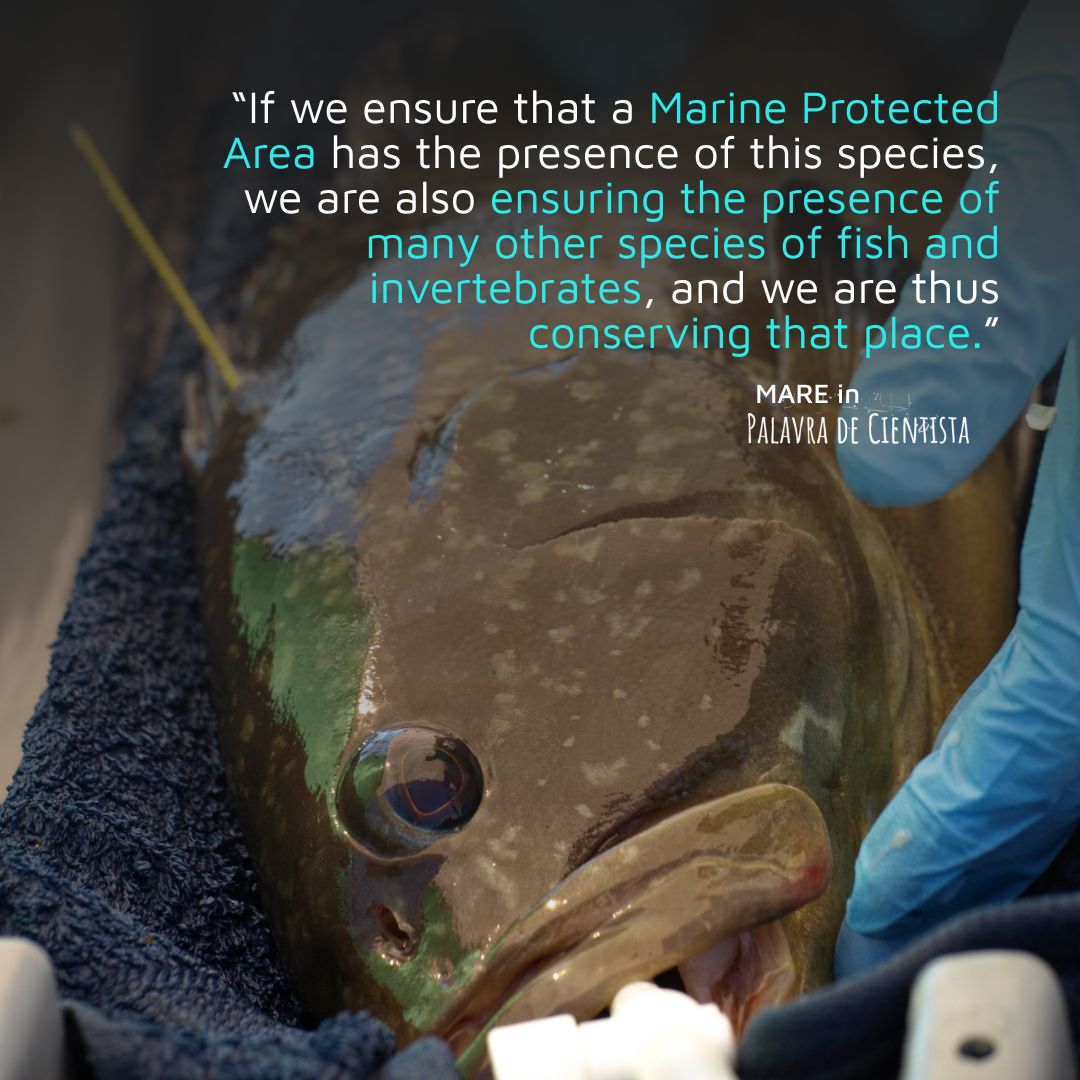Bernardo Quintella on the “Words of a Scientist” podcast
MARE researcher Bernardo Quintella was the latest guest on the podcast “Palavra de Cientista”, hosted by Eduardo Canelas. In the conversation, the MARE researcher presented the results of his pioneering study to repopulate the grouper (*Epinephelus marginatus*), an emblematic species of the Portuguese coast and classified as “Endangered” in Europe. 
The project was carried out by researchers from MARE/ARNET, in collaboration with the Faculty of Sciences of the University of Lisbon (CIÊNCIAS ULisboa) and the University of Évora. The research has shown that a short period of acclimatization at sea, in marine cages, can significantly increase the success of restocking actions.
“With a small change in the procedure, we were able to significantly increase the spatial fidelity of the groupers to the release area,” explained Bernardo Quintella. “After almost a year, 50% of the groupers that had been acclimatized still remained in the study area.”The study arose from the need to speed up the natural recovery of the species, once abundant on the Alentejo and Vicentina coast, but now rare due to overfishing and its own vulnerability. The grouper is a territorial fish that inhabits specific and easily identifiable areas, which makes it easy to catch and difficult for populations to regenerate naturally.
The first phase of the project, carried out in 2019, involved the release of 20 sub-adult groupers bred in captivity by IPMA (Portuguese Institute for the Sea and Atmosphere) in the Pessegueiro Island area. However, the results were limited: the fish quickly left the study area.
In a second phase, in 2021, the researchers tested a new protocol. One group of groupers remained in acclimatization cages in the port of Sines for five weeks before being released, while another group was released directly after transportation. The results left no doubt: the acclimatized fish stayed significantly longer in the protected area.
The research is now moving into a third phase, with the support of the Viridia Foundation, which will allow the production and release of thousands of juvenile grouper. These will be introduced into the wild at a younger age - around one year old and 20 centimeters long - in order to assess the effectiveness of restocking on a larger scale.
Bernardo Quintella also addressed the challenges of reproduction in captivity, pointing out the complexity of the species' social behavior, which includes sex changes throughout life. "Curiously, the fish have to like each other. “It's happened that there's been this introduction and the male hasn't liked the female or another female hasn't liked the second female that's been introduced and some less desirable behavior ends up happening there,” he said.
The researcher stresses that the grouper is an ecological indicator of the environmental quality of marine protected areas. "The presence of this species shows that the ecosystem is well preserved. Protecting the grouper means protecting a whole range of marine species."
Despite his optimism, Quintella argues that the ultimate goal should be the natural recovery of the species, without the need for continuous restocking. “I hope that in the future the grouper will be able to do the job it knows best: colonize habitats and promote population resilience.”
This study, although focused on the grouper, could serve as a model for other marine species, reinforcing the importance of science in biodiversity conservation.
To listen to the podcast click HERE
